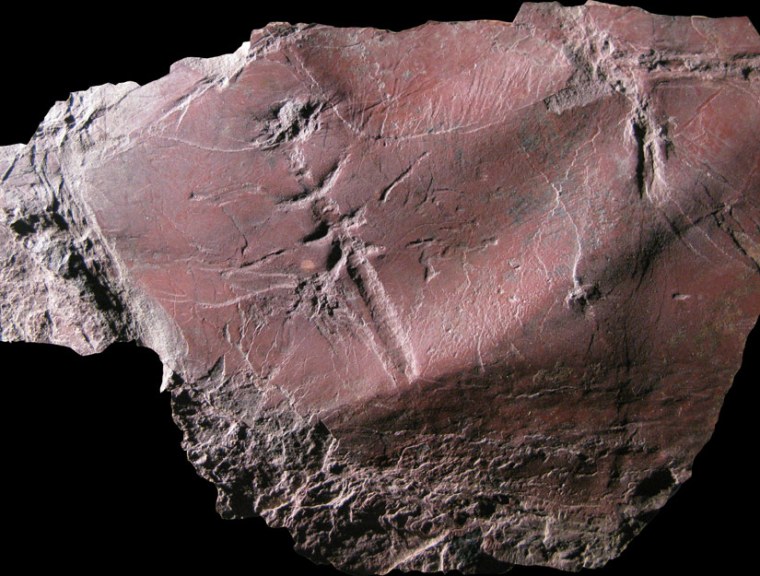Some 312 million years ago, a mayfly landed at the muddy edge of a puddle and then flew away. The mud of the tropical floodplain happened to be the perfect consistency to retain a detailed impression of the mayfly's body — including details of its body segments and marks made by its claws.
The next flood covered the impression with silt, preserving it as it hardened into rock over subsequent millennia.
The mayfly fossil is now the oldest known full body impression of a flying insect, displacing the previous record-holder from 280 million to 285 million years ago.
The fossil was discovered in 2008 when Tufts University undergraduate Richard Knecht was lost in a swamp in some woods behind a Massachusetts strip mall, searching for a rock formation believed to harbor fossils, according to a 1929 graduate thesis.
As he emerged from the swamp he came to a rock outcrop of the type he was looking for. "I grabbed a loose piece on the outer edge of it and it was already naturally split as rocks tend to do as they weather,'" said Knecht, who now works at Harvard University's Museum of Comparative Zoology.
"I opened it like a book and there were both halves (cast and mold) of the specimen.
Insects are soft-bodied animals and tend to break apart or curl in strange ways after death, so good quality fossils showing the bodies of insects are hard to come by. Wings are the most common parts paleontologists find. This makes these types of impressions especially important.
"Most fossil insects, when you look at them, you don't really have a lot of surface detail," said Conrad Labandeira, curator of paleoentomology at the Smithsonian Institution in Washington, D.C., who was not a part of the study.
"This is a very valuable type of preservation," he continued. "You can actually see some of the movements of the appendages. This gives you some idea of the scope of movement of the legs. … That gives you some information that we don't normally get from body fossils."
Evidence suggests the fossil represents the progenitor of modern mayflies, and pushes back the date for the emergence of this group of insects.
The specimen would have shared its then-tropical surroundings with other flying and non-flying insects, amphibians, proto-reptiles and ancient plants including some resembling today's horsetails, said Jacob Benner of Tufts University, another team member along with Michael Engel of the University of Kansas.
The team's findings appear in Proceedings of the National Academy of Sciences.
The oldest evidence of any kind for insects comes from insect body parts dating to the Devonian period, starting 418 million years ago, Labandeira said.
The only older full-body impression than the mayfly is one of a flightless insect, found by the same group in the same site after discovering the mayfly impression, Knecht said. The team has found at least a thousand other fossils at the site, Knecht said, including fossil tracks from what appears to be a proto-reptile.
"We've found a lot of interesting stuff," Knecht said. "This is just one of the characters coming out."
